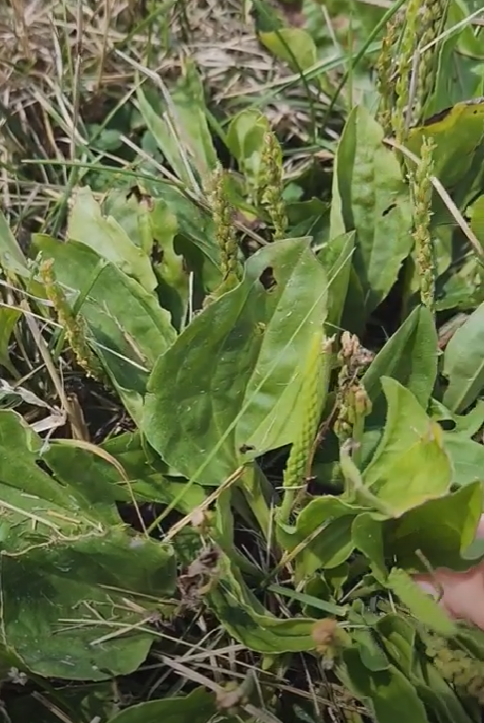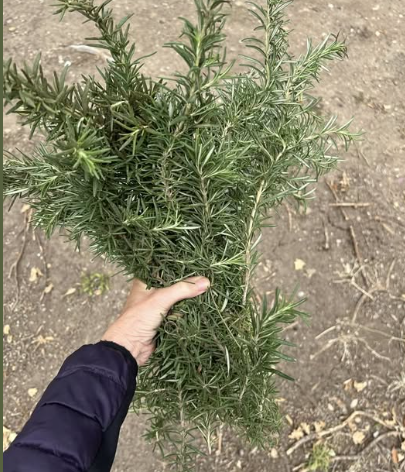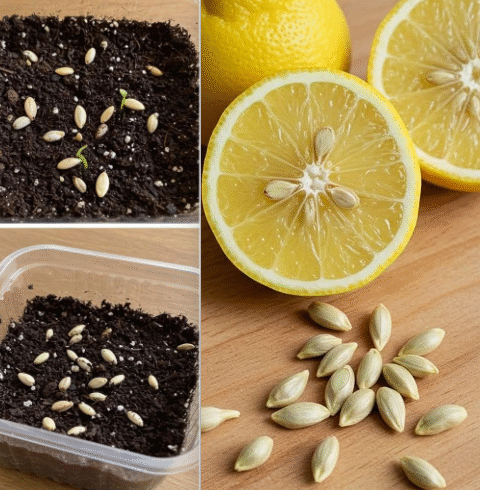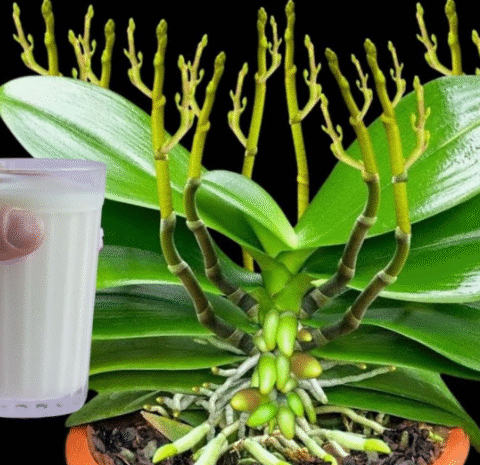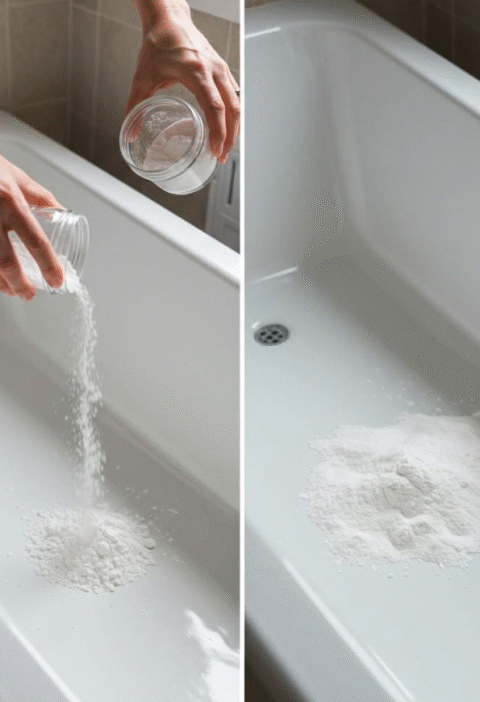Plantain (Plantago major & Plantago lanceolata): Properties & Benefits of Nature’s Medicine 🌿
Often dismissed as a common weed, **plantain** refers to two widespread species—**broadleaf plantain** (*Plantago major*) and **ribwort or lanceleaf plantain** (*Plantago lanceolata*)—with a long history in traditional herbal medicine. Native to Europe and Asia, now found globally, these garden plants hold potent anti‑inflammatory, antimicrobial, wound‑healing, respiratory, and digestive benefits. In this in‑depth guide, we dive into their chemical makeup, traditional uses, modern research, practical harvesting tips, safety insights, recipes, expert commentary, and FAQs.
1. Botanical Overview & Identification
Plantago major (Broadleaf Plantain)
- Large, oval leaves with parallel veins radiating from base, forming low rosette.
- Short flower stalks bearing spikes of tiny greenish‑white flowers.
- Common in lawns, pathways, gardens, fields. Tolerant of compacted, disturbed soil.:contentReference[oaicite:1]{index=1}
Plantago lanceolata (Ribwort Plantain)
- Narrow lanceolate leaves with strong parallel veins, up to 45 cm tall flowering stalks.
- Each flowering spike produces up to 200 seeds; often found in roadsides, meadows, lawns.:contentReference[oaicite:2]{index=2}
2. Phytochemistry: Bioactive Components
Both species are rich in mucilages, iridoid glycosides, phenylethanoids, flavonoids, terpenoids and pollen‑free (though *lanceolata* pollen can cause allergies). Key compounds include:
- Iridoid glycosides: aucubin, catalpol, asperuloside – known for anti‑inflammatory, wound‑healing, anti‑spasmodic effects.:contentReference[oaicite:3]{index=3}
- Phenylethanoids: acteoside (verbascoside), plantamajoside, lavandulifolioside – potent antioxidants & immunomodulators.:contentReference[oaicite:4]{index=4}
- Flavonoids & phenolic acids: rutin, luteolin‑7‑glucoside, chlorogenic acid – support anti‑inflammatory, cardiovascular and metabolic health.:contentReference[oaicite:5]{index=5}
- Mucilage polysaccharides: ~2–6 % by weight – demulcent, soothing to mucous membranes and skin.:contentReference[oaicite:6]{index=6}
- Terpenoids, tannins, alkaloids, fatty acids: provide antimicrobial, anti‑hemorrhagic effects.:contentReference[oaicite:7]{index=7}
3. Traditional Uses & Ethnobotanical Applications
Plantain has been used medicinally for millennia—from Dioscorides (1st century AD) through Persian, European, Native American and vernacular herbal traditions.:contentReference[oaicite:8]{index=8}
- Wound healing & insect bites: Fresh crushed leaves applied as poultice to cuts, stings, boils, rashes. Stops bleeding quickly, soothes irritation.:contentReference[oaicite:9]{index=9}
- Coughs & respiratory support: Leaf tea or syrup used for sore throat, bronchitis, dry cough and mild asthma.:contentReference[oaicite:10]{index=10}
- Gastrointestinal & urinary uses: Infusions for diarrhea, dyspepsia, peptic ulcers, hemorrhoids; seeds sometimes used as mild bulk laxative.:contentReference[oaicite:11]{index=11}
- Anti‑hemorrhagic & astringent: Helps stop minor bleeding from wounds or skin.:contentReference[oaicite:12]{index=12}
- Traditional Persian Medicine (TPM): Used for eye issues (conjunctivitis), earaches, bladder/kidney discomfort, diarrhea, uterine bleeding, coughs.:contentReference[oaicite:13]{index=13}
4. Modern Pharmacological Evidence
Contemporary research supports many traditional uses:
- Wound healing: Ex‑vivo and animal studies show plantain extracts accelerate closure, tissue regeneration, angiogenesis, fibroblast proliferation. Comparable sometimes to standard burn ointments.:contentReference[oaicite:14]{index=14}
- Anti‑inflammatory: Extracts inhibit inflammatory mediators (e.g. prostaglandins, NF‑κB pathway), reduce paw edema and mucosal inflammation.:contentReference[oaicite:15]{index=15}
- Antimicrobial & antiviral: Activity demonstrated against bacteria, fungi, viruses in lab studies. May reduce infection risk in minor wounds and respiratory conditions.:contentReference[oaicite:16]{index=16}
- Antioxidant & immunomodulatory: Contains polyphenols and glycosides that boost nitric oxide and TNF‑α production in macrophages, potentially supporting immune responses.:contentReference[oaicite:17]{index=17}
- Anti‑ulcerative, antidiabetic, antidiarrheal: Evidence from animal models suggests benefit for gastric ulcers, diabetic complications, diarrhea.:contentReference[oaicite:18]{index=18}
5. Nutritional & Therapeutic Components Table
| Component | Approx. Content | Therapeutic Role | Notes |
|---|---|---|---|
| Aucubin / Catalpol | ~2–3 % in leaves | Anti‑inflammatory, tissue repair | Commercial extracts standardized |
| Acteoside / Plantamajoside | ~1–1.5 % | Antioxidant, immunomodulating | Higher in aerial parts |
| Mucilage polysaccharides | 2–6 % | Demulcent, soothing mucus membranes & skin | High in seeds & leaves |
| Flavonoids (rutin, luteolin‑7‑O‑glycoside) | Trace to small | Anti‑inflammatory, antioxidant | Supports cardiovascular and digestive health |
| Tannins, terpenoids | Minor | Astringent, antimicrobial | Apply only externally or diluted |
6. Harvesting, Preparation & Usage Tips
Harvesting Safely
- Collect from clean, pesticide‑free locations.
- For leaves, harvest young, tender basal leaves; older leaves can be tougher.
- Use gloves if handling allergic individuals or with skin sensitivity.
Preparation Methods
- Fresh poultice: Crush leaves and apply directly to insect bites, minor cuts or irritated skin 3–4× per day. Soothes itching and speeds healing.:contentReference[oaicite:19]{index=19}
- Infusion (tea): 1 tsp dried leaves per 250 ml boiling water, steep ~10 min. Drink for coughs, bronchitis, sore throat, or mild diarrhea.:contentReference[oaicite:20]{index=20}
- Syrup or decoction: Traditional for children’s coughs—combine boiled leaf decoction with honey or glycerin.:contentReference[oaicite:21]{index=21}
- Tincture or glycerite: Leaves macerated in alcohol or glycerin for topical or internal use.
- Seed mucilage: Though separate species (*P. ovata*), seeds from plantain can provide mucilage for mild bulk laxative or soothing throat lozenges.:contentReference[oaicite:22]{index=22}
7. Expert‑Style Insights
Dr. Samira Haddad, herbal pharmacologist: “Plantain leaves provide broad-spectrum benefits—from mild astringency to mucilage‑driven soothing action. Topical use for insect bites and minor wounds is effective and safe when fresh leaves are available.”
Prof. Liam O’Connor, ethnobotanist: “The dual species—*major* and *lanceolata*—offer complementary uses. The lanceleaf form is preferred for respiratory remedies due to its higher acteoside content, while broadleaf is excellent for wound care.”
8. Realistic Health & Safety Tips
- Always patch‑test crushed leaf on forearm before extended topical use.
- Avoid ingestion in large doses—mostly safe, but seeds can act as mild bulk laxative. Consult healthcare provider if taking medications.:contentReference[oaicite:23]{index=23}
- Not recommended during pregnancy or breastfeeding without medical advice.
- Avoid using plantain pollen contact if you have allergies to grasses or pollen (especially *P. lanceolata* during flowering season).:contentReference[oaicite:24]{index=24}
- Do not apply to deep wounds or serious infections—seek medical care.
9. Simple Uses & Home Remedies
Insect Bite Relief Poultice
Crush fresh leaves between clean fingers and press gently onto insect bite. Secure with bandage if needed. Repeat every 15 minutes for up to an hour. Leaves act as both antihistamine and anti‑inflammatory.:contentReference[oaicite:25]{index=25}
Soothing Plantain Tea
Steep 1 teaspoon dried leaves in 250 ml hot water for 10 minutes. Strain and sweeten lightly if desired. Drink up to 3 cups daily for throat irritation or mild cough.
Plantain‑Honey Syrup for Cough
- Simmer 2 Tbsp fresh leaves in 250 ml water until reduced by half.
- Strain and stir in 3 Tbsp raw honey or glycerin.
- Take 1 Tbsp up to 3× per day to soothe cough and throat.:contentReference[oaicite:26]{index=26}
Cooling Eye Wash (Broadleaf only)
Crush leaves and strain juice; dilute 1:5 with boiled cooled water. Use as gentle eye rinse to soothe irritation—but consult practitioner first.:contentReference[oaicite:27]{index=27}
10. Frequently Asked Questions (FAQs)
- Can I eat plantain leaves? Yes. Young leaves can be eaten raw in salads or cooked like spinach. Older leaves are bitter and better cooked.:contentReference[oaicite:28]{index=28}
- Are plantain species edible? Both species are edible. *P. major* has broader leaves and milder flavor, while *P. lanceolata* works better in teas.:contentReference[oaicite:29]{index=29}
- Can plantain treats insect bites? Yes—fresh leaf poultice can reduce swelling, itch and stop bleeding. Repeat application as needed.:contentReference[oaicite:30]{index=30}
- Is plantain safe for children? Generally yes when used as a mild tea or syrup. Always consult a healthcare provider, especially in young children.
- Any side effects? Rare: mild stomach upset if internal; contact dermatitis in sensitive users. Avoid pollen during flowering if allergic.:contentReference[oaicite:31]{index=31}
- How often should I use it? Topical as needed; internal use up to 3 cups tea per day for short durations (up to 2 weeks). Consult provider if using longer term.
- Can plantain help ulcers? Animal studies suggest anti‑ulcer benefit; human evidence is limited. More research is needed.:contentReference[oaicite:32]{index=32}
- Does it boost immunity? Plantain compounds modulate macrophage activity and cytokine release; may support immune response.:contentReference[oaicite:33]{index=33}
- Where to forage it? Harvest from chemical‑free lawns, meadows, roadsides away from traffic and pets.
- Is it invasive? Yes—*P. lanceolata* is invasive in regions like North America and Australia. Foraging helps control spread.:contentReference[oaicite:34]{index=34}
11. Conclusion
Though often overlooked as a weed, plantain species (*Plantago major* and *P. lanceolata*) offer a deep well of botanical medicine: soothing mucilage, anti‑inflammatory iridoids, antioxidant phenylethanoids, and antimicrobial tannins. From wound poultices to gentler cough teas, these plants support skin, respiratory and digestive health with a long tradition behind them. Always harvest responsibly, use fresh leaves when possible, and consult a healthcare provider before prolonged internal use or during pregnancy. With wise application, plantain brings centuries of traditional healing to your herbal toolkit.
